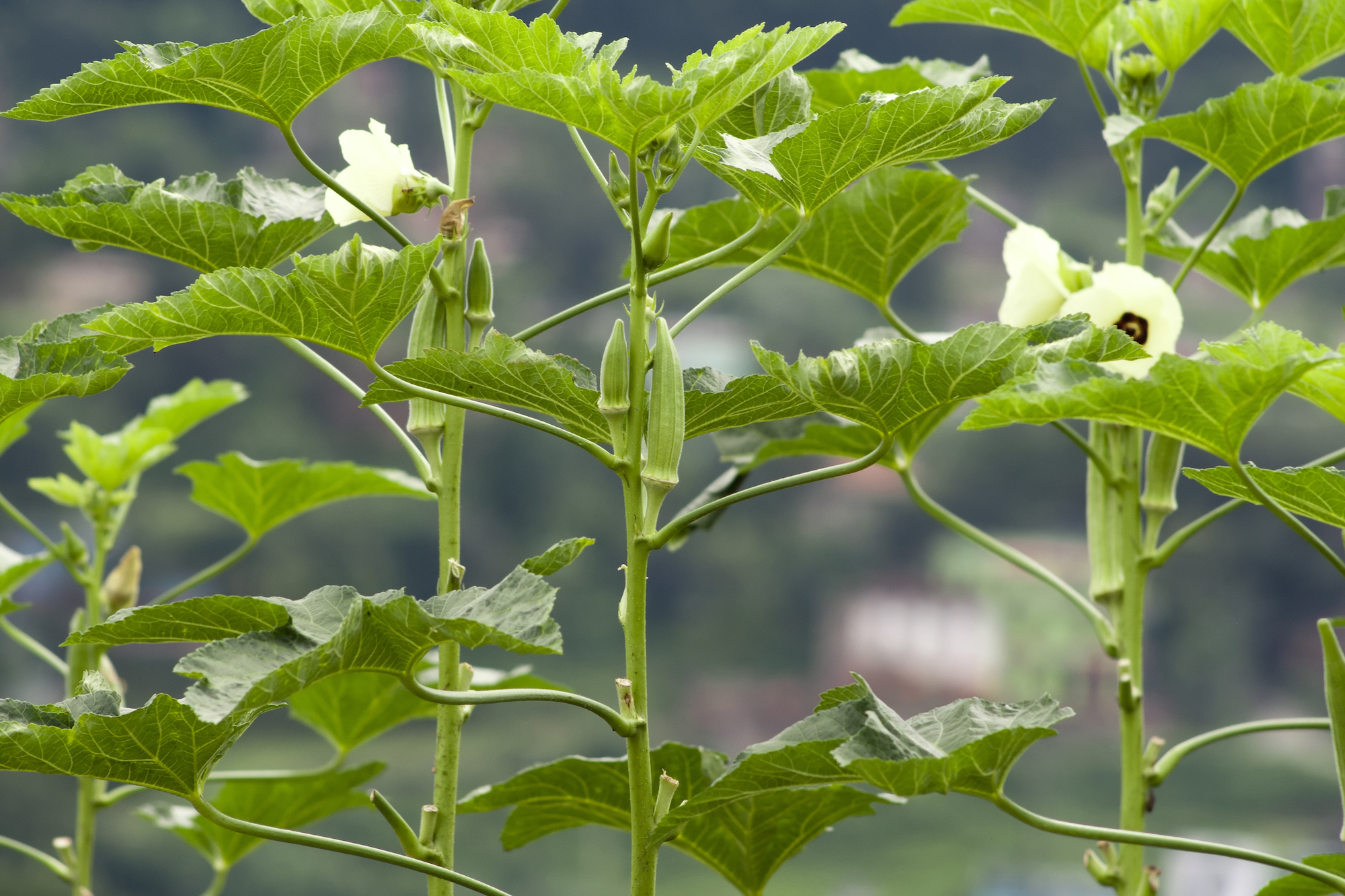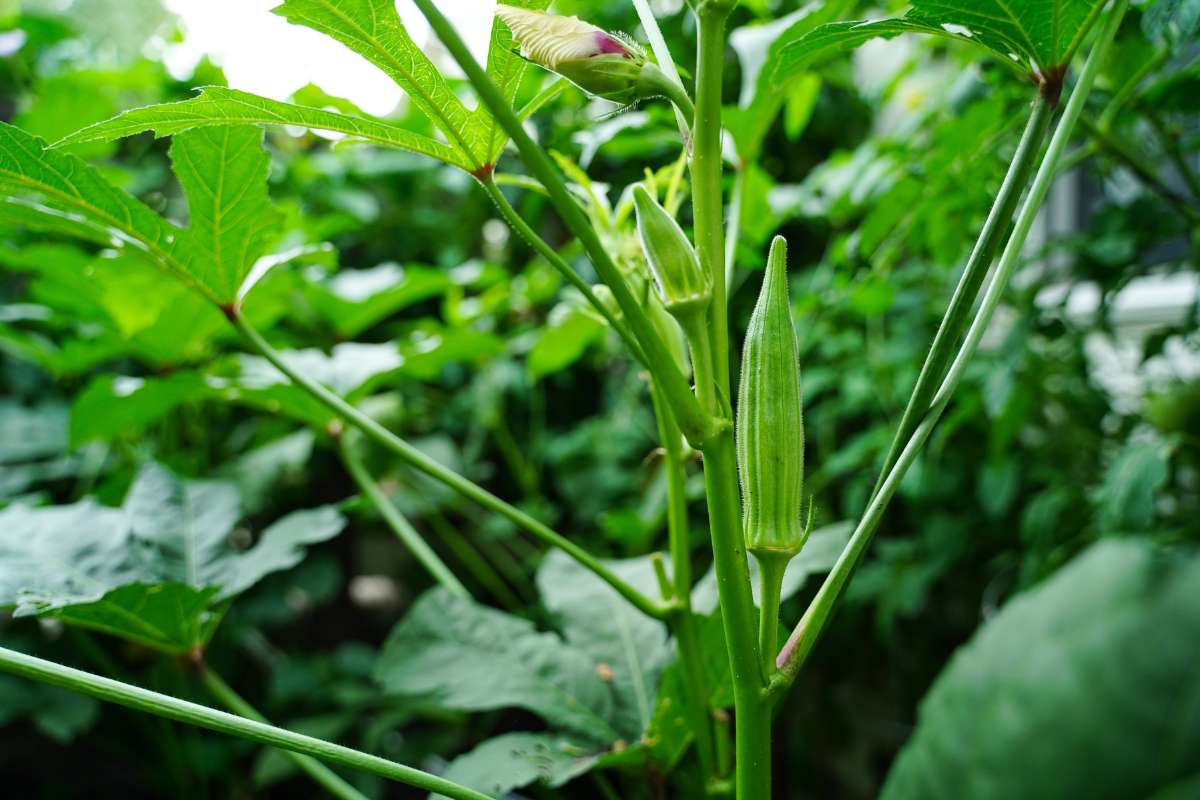Grow Your Own Okra in Canada: A Step-by-Step Guide for Gardeners
Okra, often affectionately known as lady’s finger, is one of those humble yet incredible vegetables that connects generations of gardeners and cooks around the world. With its distinctive slender green pods, okra has long been a staple in Southern gardens and kitchens, beloved for both its taste and nutritional benefits. From crispy fried okra served at family dinners to hearty stews simmering on the stove, this plant is deeply rooted in culinary tradition.
But here’s the good news — you don’t have to live in a hot and humid climate to enjoy the magic of growing okra.
Yes, you can absolutely grow okra right here in Canada, even with our shorter and cooler growing seasons.
With thoughtful planning and a few smart techniques, okra adapts surprisingly well to Canadian gardens, especially when planted in raised beds, containers, or protected sunny spots. These growing methods not only help mimic its preferred warm, loose, and well-draining soil conditions but also extend the season just enough for okra to thrive.
For gardeners who love the idea of harvesting something a little different — something that reminds you of faraway summer gardens — okra brings both beauty and bounty. Its large, hibiscus-like yellow blooms add ornamental value before quickly transforming into tender pods that are ready to be picked in just a few days. It’s a plant that keeps giving all summer long, rewarding growers who check their plants often and harvest frequently.
In this detailed guide from DH Garden Centre — your local Vancouver gardening partner, we’ll show you exactly how to go from seed to harvest with confidence. Whether you’re a first-time grower or looking to expand your edible garden, okra offers a deeply satisfying and surprisingly easy-growing experience that will inspire you every day in your garden.
Let’s get started on your journey to growing fresh, healthy, and homegrown okra — right here, in the heart of Canada.
:max_bytes(150000):strip_icc()/companion-plants-for-okra-5074423-08-2a6393954bfd42ae8b67449fb35094e5.jpg)
With thoughtful planning and a few smart techniques, okra adapts surprisingly well to Canadian gardens, especially when planted in raised beds, containers, or protected sunny spots.
🌱 Why Grow Okra?
When planning your garden, you might ask yourself: “Why should I grow okra?”
The answer goes far beyond its delicious taste.
Growing okra in Canada is not only possible — it’s also a deeply rewarding experience packed with both nutritional and gardening benefits.
✅ A Nutrient Powerhouse Right From Your Garden
Okra is often praised for its impressive nutritional profile.
Each tender pod is naturally rich in:
-
Vitamins A, C, and K → Essential for maintaining healthy vision, boosting your immune system, and promoting proper blood clotting and bone strength.
-
Dietary Fiber → Helps support smooth digestion, regulate blood sugar levels, and keep you feeling fuller longer.
-
Powerful Antioxidants → Protect your cells from damage, reduce inflammation, and support overall wellness, making okra a smart choice for health-conscious gardeners.
Adding homegrown okra to your meals ensures you and your family enjoy fresh, chemical-free vegetables straight from your backyard — the true taste of healthy, organic living.
✅ A Beautiful and Productive Addition to Your Canadian Garden
Beyond health, okra brings beauty and excitement to your garden.
Each plant grows upright, with striking green foliage and large, elegant yellow flowers that resemble hibiscus blooms. These flowers not only delight the eyes but also attract pollinators, enriching your entire garden ecosystem.
Once flowering begins, okra pods develop incredibly fast. In the peak of summer, you may find yourself harvesting new pods every 2 days — few vegetables offer such rapid and continuous yields. This makes okra perfect for gardeners who enjoy frequent harvests and fresh additions to their cooking.
✅ A Rewarding and Low-Maintenance Crop for Home Gardeners
Okra thrives in warm weather and loves sunlight, making it an excellent choice for Canadian gardens during the summer months. Especially when planted in raised beds or containers, okra benefits from warm soil and excellent drainage, reducing the risk of disease and root issues.
With minimal care — regular watering, occasional feeding with organic fertilizers, and timely harvesting — your okra plants will reward you abundantly. There is little more satisfying than stepping outside and picking crisp, young okra pods just minutes before cooking.

Growing okra in Canada is not only possible — it’s also a deeply rewarding experience packed with both nutritional and gardening benefits.
Is Okra Suitable for Canadian Gardens?
While okra naturally thrives in hot and humid environments, don’t let Canada’s cooler and shorter summers discourage you.
With a little planning and the right growing techniques, okra can flourish beautifully in Canadian gardens, from urban backyards to balcony containers.
Here’s what you need to know to ensure success:
Climate Considerations: Timing is Everything
In Canada, where the growing season is often shorter than in tropical or southern climates, timing your planting is crucial.
Okra loves warmth, so the best approach is to:
👉 Start seeds indoors 4 to 6 weeks before the last expected frost date. This gives your plants a valuable head start.
👉 Transplant seedlings outdoors only when nighttime temperatures consistently stay above 15°C (59°F) and all risk of frost has passed — typically late May or early June depending on your region.
👉 In cooler areas, consider using cloches or row covers to retain heat during early growth stages.
Sunlight: Okra Loves to Soak Up the Sun
To produce strong, healthy plants and plenty of pods, okra requires full sun exposure:
☀️ Minimum 6 hours of direct sunlight daily, though 8 hours or more is even better.
☀️ If possible, position your okra in the sunniest part of your garden, patio, or balcony.
In Vancouver and other Canadian cities, summer days offer plenty of sunlight — making this requirement easy to meet.
Soil: Well-Draining and Nutrient-Rich is Best
Okra prefers loose, fertile soil that drains well yet retains enough moisture to keep roots happy:
-
Ideal soil pH: Between 6.0 and 6.8 (slightly acidic to neutral).
-
Organic matter: Enrich your soil with compost or aged manure before planting. This boosts fertility and improves texture.
-
Drainage: Avoid heavy clay soils unless amended. Okra does not like “wet feet” — overly soggy soil can lead to root rot.
Raised Beds and Containers: Perfect Solutions for Canadian Growers
For gardeners in Canada, especially in cooler coastal or northern regions, raised beds or containers offer huge advantages:
📍 Warmer soil: Raised beds heat up faster in spring and stay warmer, which okra loves.
📍 Better drainage: Prevents root issues while maintaining steady moisture levels.
📍 Easier care: Control over soil quality, pests, and weeds.
Choose deep containers (at least 12–18 inches) if you prefer patio or balcony gardening.
Okra’s taproot system benefits from extra room to grow deep and strong.

👉 Start seeds indoors 4 to 6 weeks before the last expected frost date. This gives your plants a valuable head start.
Step-by-Step Guide to Planting Okra in Raised Beds and Containers (For Canadian Gardeners)
Now that you’ve gathered your essentials, it’s time for the most exciting part: planting your okra seeds and watching them grow into productive, beautiful plants.
Follow these simple steps to ensure your okra gets the best possible start in your Canadian garden:
Seed Preparation: Encourage Fast and Healthy Germination
Okra seeds have a hard outer coating, which can slow germination if planted directly into the soil.
To give them a head start, it’s highly recommended to:
✅ Soak the seeds in warm water for 12-24 hours before planting.
✅ This softens the seed coat and speeds up germination, helping your okra seedlings sprout faster and more uniformly.
👉 Pro Tip: Start this process the night before you plan to sow for best results.
Sowing Seeds Indoors: Get a Head Start on the Growing Season
In Canada, where summers are shorter, starting seeds indoors is essential for maximizing your okra harvest.
✅ Timing: Sow seeds 4-6 weeks before the last expected frost. This is usually around early to mid-April depending on your zone.
✅ Planting Depth:
-
Plant seeds about ½ inch deep in seed-starting trays or small pots filled with seed starting mix.
✅ Spacing:
-
For now, plant one seed per cell or pot.
-
Once transplanted outdoors, you will space them properly (we’ll cover that next!).
✅ Light and Temperature:
-
Keep seedlings in a warm spot — 20-25°C (68-77°F) is ideal.
-
Provide ample light using grow lights or a bright windowsill.
👉 Pro Tip: Use a heating mat to speed up germination if your home is on the cooler side.

Planting your okra seeds and watching them grow into productive, beautiful plants.
Transplanting Outdoors: Timing and Technique
When your seedlings have developed 4-5 true leaves and outdoor temperatures have stabilized (no more risk of frost), they are ready to be transplanted.
✅ Timing:
-
In most parts of Canada, this means late May or early June.
-
Make sure nighttime temperatures stay above 12-15°C (54-59°F).
✅ Spacing:
-
Space plants 12-18 inches apart in rows or blocks.
-
If using containers, plant one okra per large pot (minimum 12-18 inches deep and wide).
✅ Planting:
-
Dig a hole deep enough to accommodate the root ball.
-
Gently remove seedlings and plant them at the same depth as they were growing indoors.
👉 Tip: Water the plants immediately after transplanting to settle the soil and minimize transplant shock.
Watering: Keep Moisture Consistent
While okra can tolerate brief dry spells once established, young plants need steady moisture to thrive.
✅ Water deeply and regularly — about 1 inch per week, more during heatwaves.
✅ Avoid waterlogging → ensure soil drains well.
✅ Mulch around the plants to retain moisture and reduce weeds.
👉 Tip: Morning watering is best to avoid fungal issues and help leaves dry during the day.
Fertilizing: Feed for Steady Growth and Big Harvests
Okra is a moderate feeder and responds well to organic nutrients:
✅ At planting time: Mix in compost or slow-release organic fertilizer into the soil.
✅ During the growing season: Feed every 4-6 weeks with:
-
Organic compost tea
-
Fish emulsion (such as Neptune’s Harvest)
-
Balanced organic fertilizer (10-10-10 or similar)
✅ Avoid excessive nitrogen → too much will result in leafy plants with fewer pods.
👉 Pro Tip: At DH Garden Centre, our team can recommend the best organic fertilizer blends for okra based on local conditions.
🌸 Caring for Your Okra Plants
-
Mulching: Helps retain soil moisture and suppress weeds.
-
Pest Management: Watch for aphids and flea beetles. Use organic pesticides if necessary.
-
Pruning: Remove lower leaves to improve air circulation.
🧺 Harvesting Your Okra
-
Timing: Harvest pods when they are 2-4 inches long, typically 50-60 days after planting.
-
Frequency: Check plants every 2-3 days, as pods mature quickly.
-
Method: Use a sharp knife or garden shears to cut the pods.
Regular harvesting encourages the plant to produce more pods throughout the season.

Regular harvesting encourages the plant to produce more pods throughout the season.
Tips for Success
-
Temperature: Ensure soil temperatures are consistently above 70°F (21°C) for optimal growth.
-
Succession Planting: Plant new seeds every 2-3 weeks for a continuous harvest.
-
Companion Planting: Grow okra alongside crops like peppers and cucumbers for mutual benefits.
📞 Need Gardening Supplies or Advice?
Visit DH Garden Centre at 3742 West 10th Avenue, Vancouver, BC V6R 2G4.
-
Phone: 604-929-7335
-
Website: dhgardencentre.com
-
Facebook: dh.garden.centre160
-
Instagram: dh.garden.centre
Our experts are here to help you with all your gardening needs, from selecting the right seeds to providing tips for a successful harvest.

